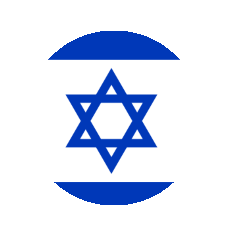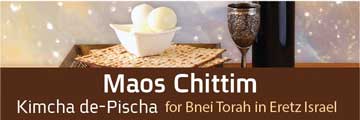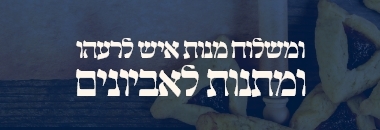This week’s parashah includes the instruction of “you shall surely load with him”—a person is obligated to assist another in loading a load onto his animal. A parallel instruction, which occurs in Parashas Mishpatim, is “you shall surely leave with him,” obligating us to assist others in unloading a load from an animal.
The passages themselves do not imply any difference between the two mitzvos. However, according to one possibility in the Mishnah (Bava Metziah 32a) the instruction of unloading an animal is more severe than the instruction of loading an animal: Although one is only obligated to load an animal in exchange for payment, the obligation to unload the animal applies even for free. The Gemara (according to one opinion) explains that this stringency is on account of the pain experienced by the animal: by unloading the animal, it is spared a degree of suffering.
As we will see below, there is a wide-ranging dispute over whether the prohibition of cruelty to animals is a full Torah prohibition. A possible source for the prohibition is actually from another instruction that occurs in our parashah: the prohibition of obstructing an ox (and preventing it from eating) while it threshes (as mentioned by the Meiri, Bava Metzia 32b).
In this article we will seek to define the parameters of the prohibition of causing pain to animals, and to give an overview of its laws.
Tzaar Baalei Chayim: Torah or Rabbinic Prohibition
The Gemara (Bava Metzia) cites a dispute between tana’im and between amora’im over whether the prohibition of causing paid to animals is a Torah law or a rabbinic injunction, without issuing a decision on the issue.
Elsewhere, however (Shabbos 128b), with regard to the laws of muktzeh on Shabbos, the Gemara states that the prohibition is a Torah law. Where an animal has fallen into a pit, and cannot be fed, one may assist it to ascend by placing cushions under it. Although this involves a rabbinic prohibition (of ‘annulling’ the cushions—they become muktzeh), it is permitted on account of the pain experienced by the animal.
Rashi explains that the source for the prohibition is from the Torah instruction of perikah (unloading): The obligation to unload the animal, according to this interpretation, derives from concern for the pain it feels. As noted above, the Meiri mentions a source from the prohibition of preventing an ox from eating, and others (Sefer Chasidim 666; Moreh Nevuchim Part 3, Chap. 17) mention the Divine angel’s criticism of Bilam’s smiting his ass as a source for the prohibition.
Based on the above Gemara, several Rishonim (Rif, Shabbos; Rosh, Bava Metzia 2:29) rule that causing pain to animals is a Torah prohibition. The Minchas Chinuch (80) writes that the Rambam concurs (concerning the Rambam’s opinion, see glosses of the Vilna Gaon to Choshen Mishpat 272, no. 11), adding that there is thus not only a prohibition of causing pain to animals, but even an obligation to prevent their pain wherever possible.
The Shulchan Aruch likewise implies that tzaar baalei chayim is a Torah prohibition, citing the ruling of the above Gemara in Shabbos (Orach Chaim 305:19; see Mishnah Berurah 305:69). The Rema (Choshen Mishpat 272:9) also mentions the prohibition as a Torah injunction.
An important ramification of the Torah status of the prohibition is mentioned by the Peri Megadim (Orach Chaim 488, M.Z. 2). If the prohibition is only rabbinic in nature, it follows that it is permitted to ask a non-Jew to perform an action that will cause animals to suffer, for in most rabbinic matters (other than Shabbos and festival matters) it is permitted to perform the ‘transgression’ by means of a non-Jew. Yet, if the prohibition is a Torah law, it follows that it is forbidden to instruct a non-Jew in causing an animal to suffer. The Peri Megadim adds in conclusion that even if there is a Torah prohibition, it is possible that one can instruct a non-Jew in ‘transgressing,’ because no actual negative commandment is involved.
Degree of Suffering
It is important to point out that the Torah prohibition of causing animals to suffer does not apply for all degrees of pain. The Nimmukei Yosef (Bava Metzia, loc. cit.) writes that the prohibition applies to “great distress,” but not to “slight distress.”
The example he brings is of an animal that fell into a pit on Shabbos. Although the animal surely experiences certain discomfort in being stuck in a pit, it is only permitted to help the animal out (in transgression of a branch of the rabbinic muktzeh prohibition) if the animal cannot be fed in the pit.
Where it is possible to cater for the animal’s needs in the pit, the discomfort of being stuck in the pit will not be sufficient cause to defer the rabbinic prohibition.
Animal Suffering vs. Human Need
The Gemara (Shabbos 110b) writes that it is permitted to castrate a cockerel, by means of an indirect method that does not transgress the prohibition of castration: “Rabbi Yochanan said: One who wishes to castrate a cockerel should cut off his crown, which causes him to be castrated.” Cutting off the crown will clearly cause the cockerel pain; nonetheless, it is permitted for the sake of its castration, which is a human need.
Elsewhere, it is clear that financial need is sufficient to defer the prohibition of tzaar baalei chayim. The Mishnah (Avodah Zarah 13b) states that it is forbidden to sell certain animals to non-Jews, out of fear that the non-Jew will use them as idolatrous offerings. Among the animals that one may not sell is a ‘white cockerel.’ However, the Mishnah explains that it is permitted to sell the animal after blemishing it: “When he is alone, he can cut of its finger, and sell it, because they do not offer up an animal with missing limbs to idolatry.”
We thus see that the prohibition of tzaar baalei chayim does not apply when there is a human need that involves causing an animal to suffer. Animals were created to serve humankind, and although it is forbidden to cause them pain, where there is a human purpose for it, the prohibition does not apply.
This principle is ruled by the Rema (Even Ha-Ezer 5:19), in the name of the Terumas Ha-Deshen (105): “For any medical or other need, there is no prohibition of tzaar baalei chayim. It is therefore permitted to pull out the feathers from a life duck, and there is no concern for tzaar baalei chayim.” However, the Rema adds that “Nonetheless, the custom is to refrain from this practice [of pulling out feathers], because it is cruel.”
Medical Tests on Animals
Based on the above principle, it follows that there is no prohibition in performing medical tests on animals, for the purpose of developing medications and treatments. This halachah is ruled by a number of poskim, including the Shevus Yaakov (Vol. 3, no. 71) and the Seridei Eish (Yoreh De’ah 91).
The Shevus Yaakov adds that in this case there is no middas chassidus in refraining from causing animal suffering, both because of the important need for animal testing, and because the ‘extreme cruelty’ of pulling out feathers is not involved.
It appears that there is no prohibition in animal trials even for the purpose of cosmetic treatments, which, though not as important as medical development, remain a human need.
The Shevus Yaakov opens his responsum by citing (from a number of authorities) that there is no prohibition of tzaar baalei chayim where human need in involved, and explains: “Wherever there is any need, for medical purposes of for financial gain, there is no concern for tzaar baalei chayim or bal tashchis, and there is even no midas chasidus.” It appears that cosmetic purposes will be included in this definition.
Hunting for Sport
Shut Noda Biyhuda (Tinyana, Yoreh De’ah 10) discusses the question of hunting for purposes of recreation and sport alone. After delving into the issue of causing animal suffering for human gain, he adds that in hunting there is no concern for tzaar baalei chayim, because “to kill animals or all types does not involve the prohibition of tzaar baalei chayim.” According to the Noda Biyhuda, actual killing is not considered causing an animal to suffer, and there is therefore no prohibition. [The Noda Biyhuda does not address the suffering that is caused in the process of chasing the animal.]
However, the Noda Biyhuda qualifies the leniency, writing that “the only hunters we find are Nimrod and Eisav, and this is not the way of Avraham, Yitzchak, and Yaakov. How will a man of Israel kill without purpose, hunting prey only as a pastime?” Moreover, based on the concluding comment of the Rema, even when tzaar baalei chayim is permitted, one must avoid acts of cruelty, and hunting is surely included.
Following this, the Noda Biyhuda actually rules that hunting is prohibited, on account of the danger that a person needlessly enters. If a person’s livelihood would be at stake, hunting would be permitted; for the sake of sport, however, it is forbidden for a person to endanger his life in such activities.
The Noda Biyhuda concludes: “Therefore, this matter involves a negative trait, which is cruelty, and also a prohibition and danger, and causes the sins of a person to be raised. Therefore, those who hear me will rest quietly in the calm of his home, and will not waste his time in such activities.”
Killing Flies and Insects
Not all authorities agree with the above ruling of the Noda Biyhuda, whereby there is no prohibition of tzaar baalei chayim in actually killing an animal. Shut Sho’el U’Meishiv (Tinyana, Vol. 3, no. 65) rules that the prohibition certainly applies to killing, proving his case from the rationale presented by the Chinuch (440) for the mitzvah of shechitah. A similar principle emerges from the Ri Migash (cited in Shita Mekubetzes, Bava Metzia loc. cit.).
However, there is clearly no prohibition involved in killing flies, mosquitoes, and other insects that disturb, frighten, or threaten to injure human beings. Such creatures can be killed even if they will suffer in the process.
Another consideration with regard to killing insects is the ruling of the Yaavatz (She’elas Yaavatz Vol. 1, no. 110), who writes that tzaar baalei chayim only applies to animals that are able to work in the service of human beings. With regard to fleas, mosquitoes, and other flies and other rodents that are unable to labor for humans, the prohibition does not apply, and it is therefore permitted to kill them.
Having said this, it is noteworthy that Iggros Moshe (Choshen Mishpat Vol. 2, no. 47), though permitting their killing, writes that where possible, it is better to kill insects and rodents by indirect means (setting a trap, rather than killing by hand). The reason for this is so that a person should not become accustomed to acts of cruelty, which are liable to influence his inner nature.
Killing Animals to Prevent their Suffering
The Chazon Ish is cited (in Dinim Ve-Hanhagos Mi-Maran Ha-Chazon Ish Vol. 2, p. 40) as having been asked by a member of the family how a dying fly should be treated. The Chazon Ish responded that the fly should be killed, so as to prevent its extended suffering.
However, it is possible (Tzaar Baalei Chayim Chap. 4, no. 3) that this ruling will only apply to small insects, and not to larger animals, such as mice, and so on. The reason for this is that with regard to larger animals, killing the animal—even if done to prevent its suffering—is perceived as an act of cruelty, and therefore it should be avoided even for noble motives.
Animal Suffering and Muktzeh
We saw above that it is permitted to transgress the rabbinic prohibition of ‘annulling a utensil on Shabbos’ (by placing it under an animal) for the purpose of avoiding tzaar baalei chayim. Based on this halachah, some authorities rule that it is likewise permitted to transgress the general prohibition of muktzeh for the same purpose. Others, however, dispute this ruling, and argue that we cannot extend the leniency from one rabbinic prohibition to others. The Mishnah Berurah (305:70) mentions both opinions, though he cites the stringent view as the basic ruling.
Shemiras Shabbos Ke-Hilchasah (Chap. 27, no. 28) mentions an interesting application of this ruling with regard to a fish that jumped out of its aquarium on Shabbos. In circumstances where placing the fish back into the water will save it from dying, the dispute above will apply:[1] According to the lenient opinion, it is permitted to place the fish back into the water (in spite of the muktzeh prohibition that applies to fish), whereas according to the stringent opinion this is not permitted.
The Chazon Ish (Orach Chaim 52:16) sides with the lenient opinion, according to which the muktzeh prohibition is waived by the concern of tzaar baalei chayim.
Tzaar Baalei Chayim for Humans
Does the prohibition of tzaar baalei chayim apply to human suffering?
According to the Rashba (Vol. 1, no. 252), the prohibition of tzaar baalei chayim applies even to human beings. For this reason, the obligation to assist in unloading an animal applies not only to a loaded animal, but even to a loaded person: One must assist in unloading the person, and saving him from needless suffering. This opinion is ruled by the Birkei Yosef (Yoreh De’ah 372:2).
However, the Radvaz (728) writes that there is no mitzvah of perikah (unloading) with regard to human beings, explaining that “concerning humans they did not mention human suffering, because a person possesses human intellect, and he should not have loaded himself beyond his capacity.” Nonetheless, the Radvaz agrees that there is certainly an obligation to save a fellow human being from suffering, as instructed by the verse “love your neighbor as yourself,” although the formal mitzvah of perikah does not apply.
Shut Chavas Ya’ir (191) writes along similar lines, explaining that although human suffering is cause for leniency in many halachos, this leniency cannot be derived from the principle of tzaar baalei chayim, because “the Torah is particular for the suffering of animals, who do not possess cognition and intellect… which is not true for human beings, who are able to offset the pain through their intellect, and accept that which befalls them with love.”
Whether the formal obligation of tzaar baalei chayim applies to humans or not, the clear lesson of the mitzvah is that we must have compassion for others: not only for humans, but even for animals.
In the build-up to the great Day of Judgment, this is surely an important point on which to focus our preparation. Just as we show compassion for others, so may Hashem show compassion for us, and judge us favorably for a good and sweet year to come.
[1] Note that the Gemara states that fish are able to perform labor for humans, and therefore the issue of tzaar baalei chayim will apply to fish even according to the Yaavatz.











I am always fascinated and impressed by articles of this nature, where the writer can amass wide ranging, encyclopedic views on a particular subject. It demonstrates their ability to traverse the Torah landscape with the ease of a mountain goat on the edge of a rocky mountain.
Yet, I often get the feeling that the forest is lost through the trees. People’s minds generally work on a macro\conceptual basis or they are finely tuned to focus on specific detailed level. In life, people often disagree because the working of their minds’ differ. When specific opinions are listed, as in this article, I feel the overarching ideas and concepts are lost in the details. One must pull back and consider what is being discussed: The concept of Tzaar Baalei Chayim! Perhaps others take for granted that for an issue to be discussed in such detail, the poskim had to hold it is high regard. And perhaps, some would claim that I have become to emotional about a subject such as this and that I must remain dispassionate to arrive at the truth. They may claim I should be as emotionally charged for Kashruth, Tzizit and Muktzah! Why should one mitzvah be receive greater passion than another?
Tzaar Baalei Chayim differs greatly. For we have mitzvos that are between G-d and man and between man and man. As humans we naturally give more or less weight to various commandments.Killing is far more emotionally charged than Shatnez because we grasp in our senses what killing is. The same is for Tzar Baalei Chayim, for those who allow their senses and their heart to be open to the truth of what goes on.
Perhaps I am simply ranting because the Jewish world is still deaf and willingly blind to the horrific conditions and behaviors, so antithetical to the Torah, of the animal industries. Being Kadosh means having a higher spiritual vibration. The Torah gives us direction to achieve a higher vibration. Not speaking badly, not murdering, eating kosher etc etc..every mitzvah is a method of raising our frequency i.e. being more kadosh.
There are over 15 laws in the Torah on how we should interact and care for animals. Loving your neighbor, a MAJOR concept is only written once. Hashem is telling us to really watch out for animals because He knows we will think them to be below us. A parent warns you many times when he or she knows you will be careless.
These are my thoughts on this most significant subject.
Leave a comment